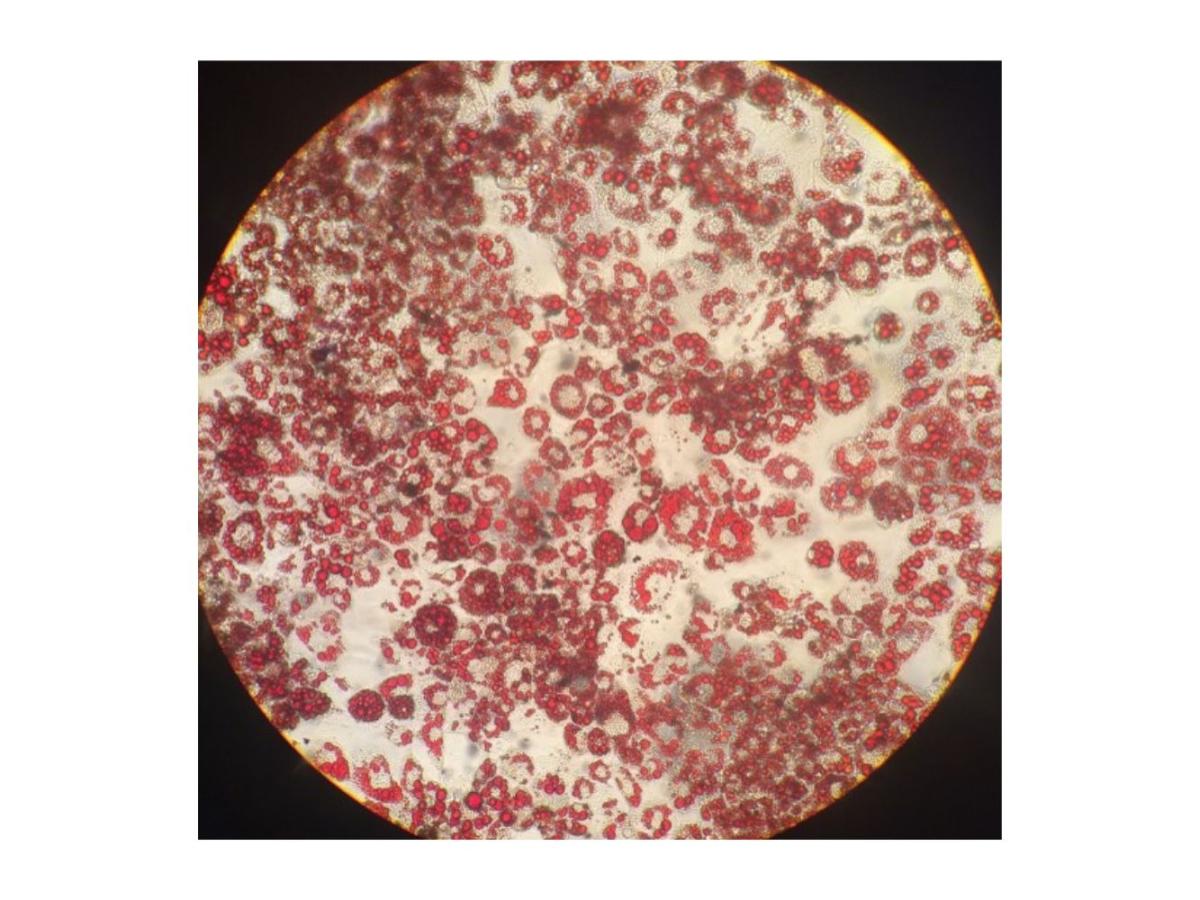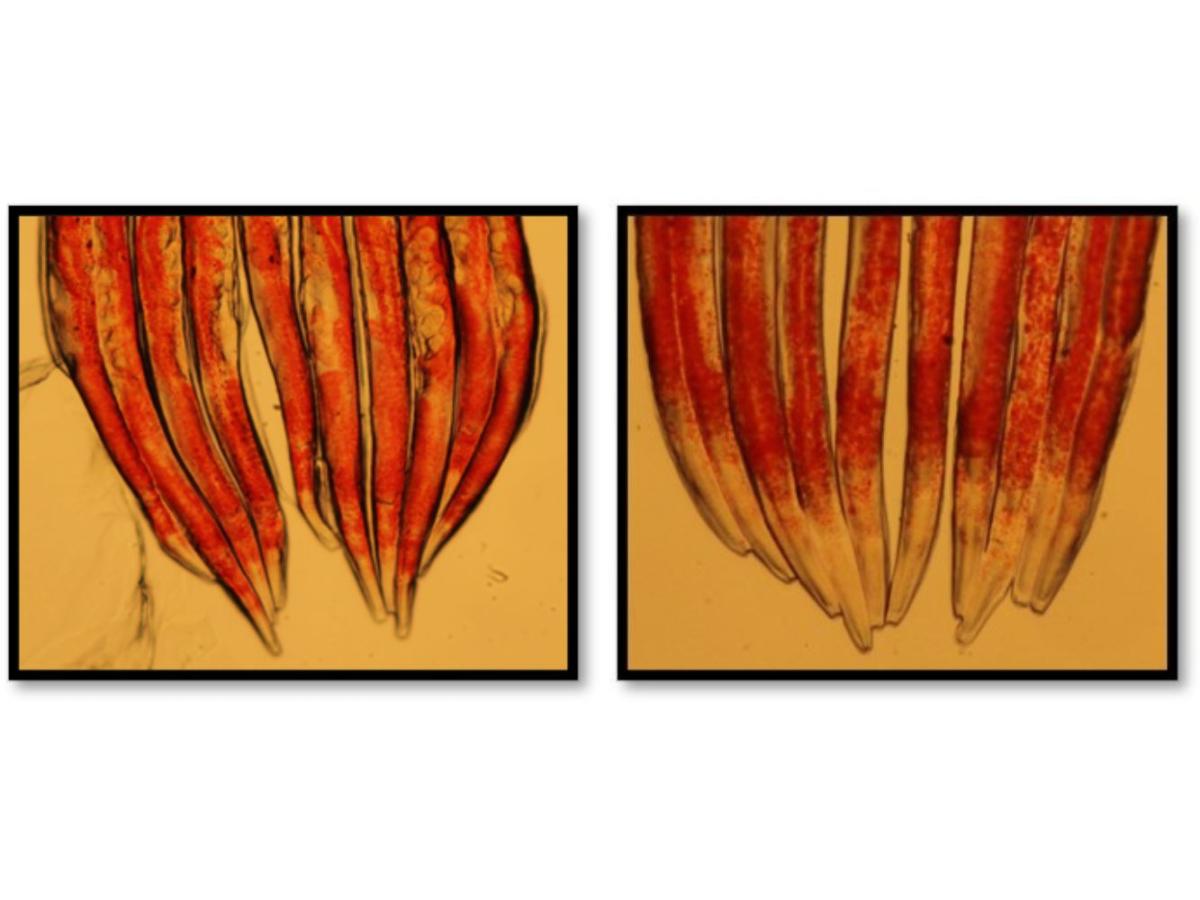Case studies within animal research
Using worms to find novel anti-obesity treatments

Professors Giovanna Bermano and Cherry Wainwright are using nematode worms (C. elegans) to understand some of the molecular events that lead to obesity and to screen for novel anti-obesity agents.
Obesity is a disease in which excess body fat has accumulated to such an extent that it negatively affects health and significantly increases the risk of co-morbidities, such as Type 2 diabetes and cardiovascular disease. Around 29% of men and 27% of women in the UK are obese. While poor diet and lack of physical activity are well established causes of obesity, certain individuals are genetically susceptible to developing obesity, and some drugs can also induce weight gain.
While diet restriction and increased physical activity are the first-line approach to weight reduction, in many cases individuals are unable to maintain weight loss achieved by this method. There are some drugs that can induce weight loss, but most of them only reduce body weight by around 3-7 Kg (6-15 lbs), and many have side effects that make them intolerable. There is therefore a need to develop other approaches, such as nutritional supplementation, that help to reduce weight gain rather than induce weight loss.
Bringing obesity and cardiovascular research together
Professor Giovanna Bermano has been studying the molecular and cellular mechanisms that underlie obesity development for over 25 years, and her research has shown that nutrients in the diet, such as the trace element selenium, can regulate the levels and activity of proteins important in obesity. Professor Cherry Wainwright has over 40 years of experience researching the pathological mechanisms of cardiovascular disease, and recent work from her lab has shown that heart function declines with age in a strain of genetically modified mice that are obesity-prone and also show signs of insulin resistance.
Resulting from a shared an interest in the activity of biomolecules from natural sources (natural products), these two scientists have teamed up to explore whether obesity, a significant risk factor for cardiovascular disease, can be prevented by seaweed extracts. The project, funded by IBioIC/BBSRC, is in collaboration with the French seaweed company Algaia.
By undertaking screening of a range of extracts in a cell-based model of mouse fat cells (3T3-L1 cells), they were able to determine their effects on lipid uptake and identify some of the molecular pathways related to fat metabolism that are targeted by the extracts, as well as establish effective, non-toxic concentrations.
However, to fully demonstrate the ability of ‘hit’ extracts to prevent the development of obesity, in vivo studies (those with living organisms) were required.
 Lipid Accumulation into 3T3-L1 Adipocytes
Lipid Accumulation into 3T3-L1 Adipocytes
From mice to worms
Most in vivo experimental models of obesity utilise rodent models, the mouse usually being the species of choice, and can be based upon mutations of one or more individual genes (such as the leptin-deficient ob/ob mouse) or use genetically intact animals exposed to obesogenic environments such as being fed high-fat diets.
While these models are excellent for evaluating drug interventions where a precise dose of (usually) a purified compound is being tested, the testing of extracts containing a mixture of compounds would require large numbers of rodents to determine the optimum ‘dose’ required to produce the desired effect. The nematode worm C. elegans is a model organism that can help to bridge the gap between in vitro and in vivo approaches as it can generate ‘high-throughput’ physiologically relevant data derived from a whole-animal setting.
Therefore, to reduce and replace the number of animals required for in vivo testing, the team employed C. elegans to undertake screening of extracts of interest to determine their in vivo toxicity, their ability to prevent obesity development in worms, their effect on appetite, and to confirm the molecular pathways targeted from gene expression studies.
 Lipids (stained orange) in C elegans worms fed normal (left) and high cholesterol (right) nutrition.
Lipids (stained orange) in C elegans worms fed normal (left) and high cholesterol (right) nutrition.
